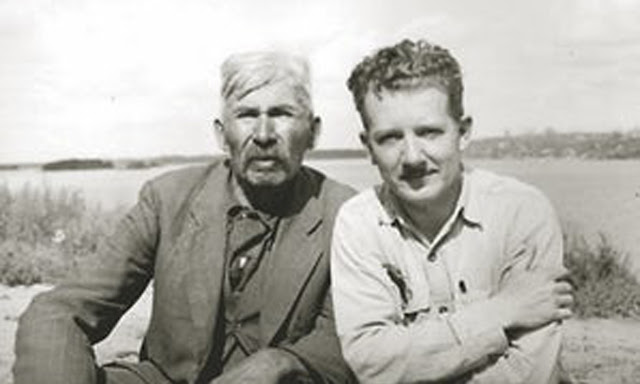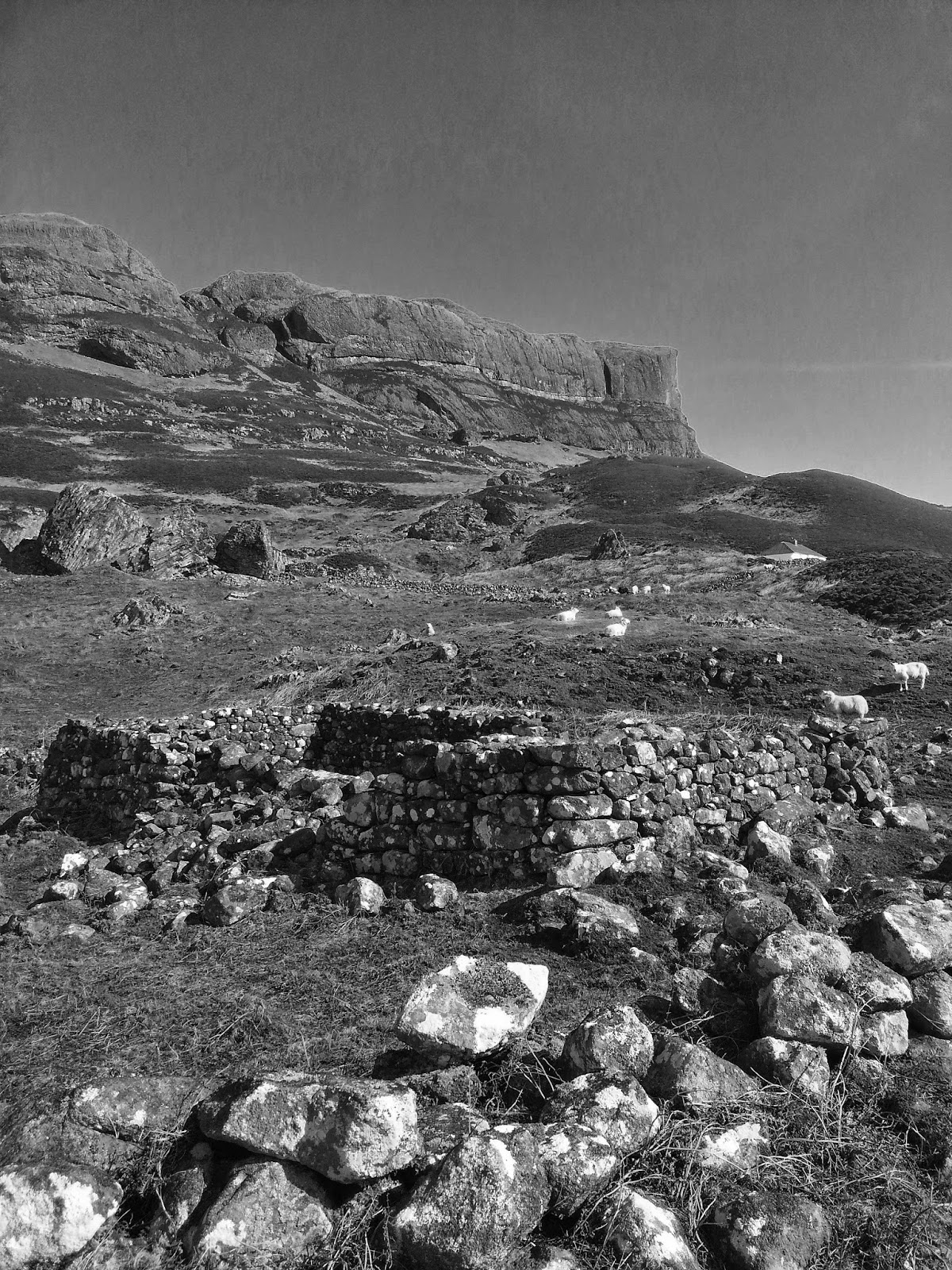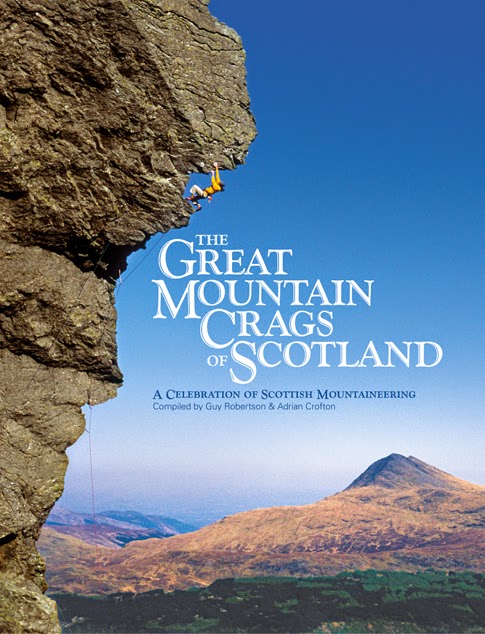A Handful of Stones - extract
Living Stones
‘For although we
are accustomed to separate nature and human perception into two different
realms, that are in fact indivisible. Before it can ever be a repose for the
senses, landscape is a work of the mind. Its scenery is built up as much from
strata of memory as from layers of rock.’
Simon
Schama, Landscape & Memory
One particular
instance is recounted by Hallowell when he asks his subject Chief Berens if even
stones and rocks were alive. The answer was that not all of them were alive, but
some were. For example, he owned a stone which his grandfather had given
him, which had vague round holes like eyes or mouths, but otherwise appeared inanimate.
Under special ritual circumstances, his grandfather would tap this stone with a
new knife and a human mouth would appear in the stone, from which a bag of
medicine could be retrieved.
Whilst this
animism may seem distant to modern secular and religious cultures, this is figuratively
how a climber perceives a stone, even if most of the time the climbing and
behaviour seems surface-oriented and purely a living behaviour on a non-living
thing. However, most climbers would admit to an aesthetic excitement on seeing
a curving line of holds up a steep prow of rock. The child-like urge to climb activates
the stone as an animate thing, even if this is perceived as an unspoken
compulsion on the part of the climber. This affection for, or perhaps by the stone, is actioned through the
climber enjoying moving on the stone, whether with success or failure it does
not yet matter. The rock can be considered suddenly alive, resistant,
difficult, and certainly different to it not
being climbed. In other words, it is no longer a stone without body, without
sense – it has character. Laying fingers on the first textured holds of the
climb is no different in expectation to Chief Berens seeking his bag of
medicine.
This intuition
of living stone, or the stone containing something mobile and organic, can be
extended to the wider landscape climbers value. The mountain environment – the
corrie full of crags and boulders, the dramatic cirque of vertical faces, the
sunrise creeping down the higher cliffs – all adds to the argument that stone
is alive. Something of our older, palaeolithic human perception is refurbished
and extends beyond the body to become the observable world.
The implication
of this is not at first apparent if the landscape is new, but builds on
repetition towards a resonance of place. It takes time. Seeing rock as a living
landscape often begins with a mish-mash impression of awe, apprehension, and
other emotions. Under a face of sheer rock, it is easy to feel overwhelmed by primal
fears and uncertainties. The skin sees the rock first. The textures become the
fulcrum points: some rock securely rough as pumice or sandpaper, some treacherously
smooth and rubbed down by the elements’ suckling tongue. At first, we really know
little of climbing and rock and landscape, none of it is connected in any
coherent way and our first impressions are always one of confused emotional
impact and tactile resistance, rather than any abstracted mindfulness. At this
point, as a boulderer might first approach a problem unknown and seemingly
impossible or beyond reach, the rock isn't what one would call alive – it
buzzes and crackles with the electricity of confusion and chaos, and behaves
more like a mirror.
This rawness of being
in your own wilderness for the first time is the beginning of a long transformation
where the landscape gradually changes to a ‘lifescape’ – a place valued and known because you have
lived within it. It is an imperceptible adventure of change, usually swept away
by the immediacy of the moment, but some deposition occurs. Those energies we
bring to the practice, even if they do reflect angst or need to return to a
world of meaning and ownership, eventually build a new world of legend. To the
climber, for example, the cliffs or boulders become things of character and
spirit and they are codified in guidebooks as living things which can be read
and repeated – stations on a ritual path. There are also rules and benchmarks,
there are standards and styles. A climbing route is also honorifically invested
with a first ascent or history, precisely to give it mythology as opposed to
leaving the exercise alone, meaningless and undocumented. This could be stretched
to a sporting version of ancestral dreaming, or at least a nod to the mythology
we feel when we really invest in our sport. Having been climbed and documented,
the route or problem is now a cypher for achievement or initiation.
While
the act of climbing is a flow, the sequences of athletic moves can be points of
lucid and trained awareness, much like a waking dream, where the chosen
environment – the rock, the elements, the 'touch' of the world – begins to
manifest consciously. The stone becomes embedded with a meaningful vibrancy,
not unlike the animated stones and trees of the Ojibwe world. This is the
beginning of a mythology of being, and a structure for the sacred. Something is
switched on inside the stone, a lamp, or an internal orrery of unseen gravities,
and we begin to feel a tug of meaning and care. Resonance is invested in the landscape. In the Ojibwe view of the
world, this is no different from an ancestor appearing to you out of a thing
which, on-demand, opens its inanimate mouth to speak to you.
As Schama wrote
in Landscape and Memory, this landscape needs shaping by our perception,
and it requires history as the matrix on which meaning can be built. The
exercise is simply one of learning and repetition; of visitation and memory. Our
lifescapes are built onto the land, like a rebuilt ruin, replaced bit by bit
with stones we have built with our mind and experience. This is when we become
embedded back into the world – we just need to tap it with a new knife.
Sources:
Hallowell, A. Irving. Contributions
to Ojibwe Studies: Essays, 1934-1972, Edited and with introductions
by Jennifer S. H. Brown and Susan Elaine Gray, University of Nebraska Press,
2010.
https://www.nebraskapress.unl.edu/nebraska/9780803223912/
https://www.nebraskapress.unl.edu/nebraska/9780803223912/

Schama, Simon. Landscape and Memory, HarperCollins Publishers, 1995.
Hallowell, A. Irving. ‘Ojibwa Ontology, Behavior, and World View’, in Readings in Indigenous Religions, ed. Graham Harvey, Continuum, 2002.





